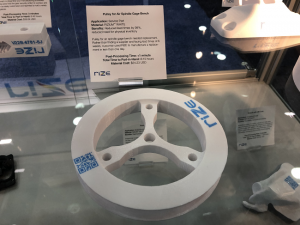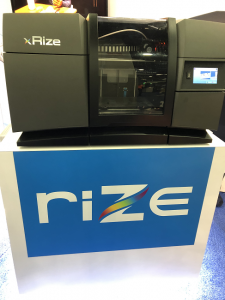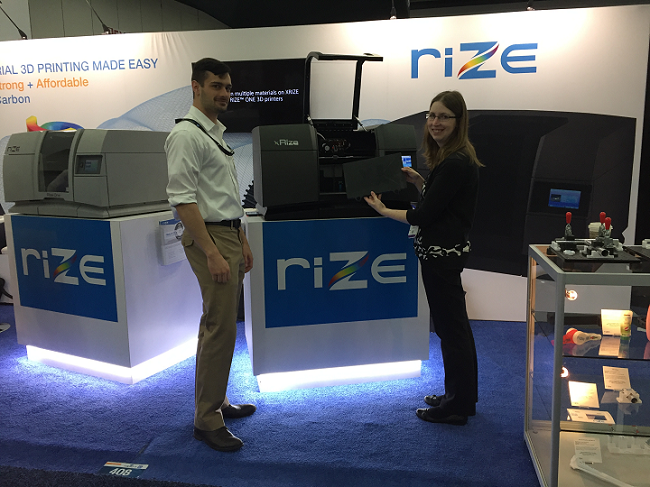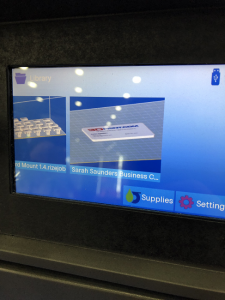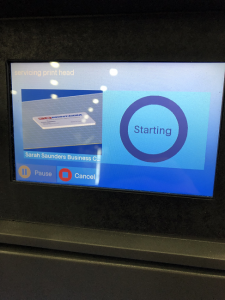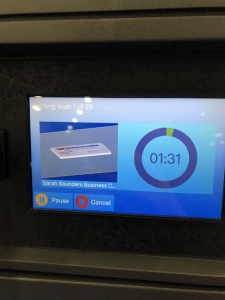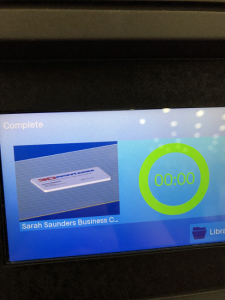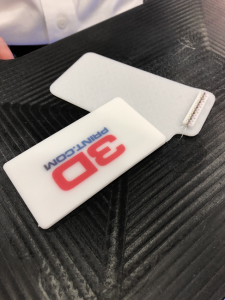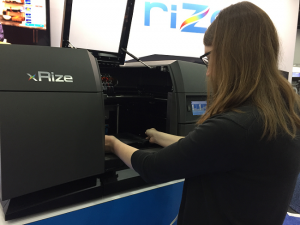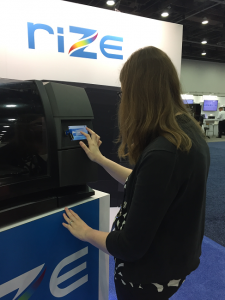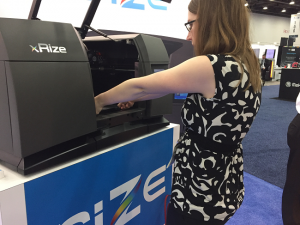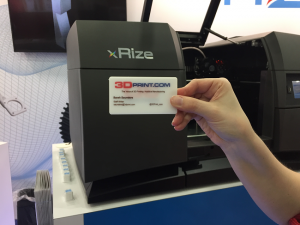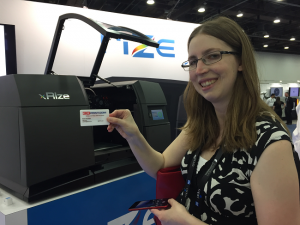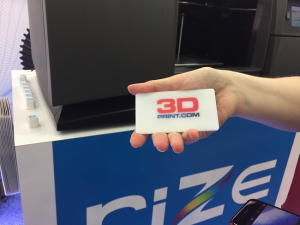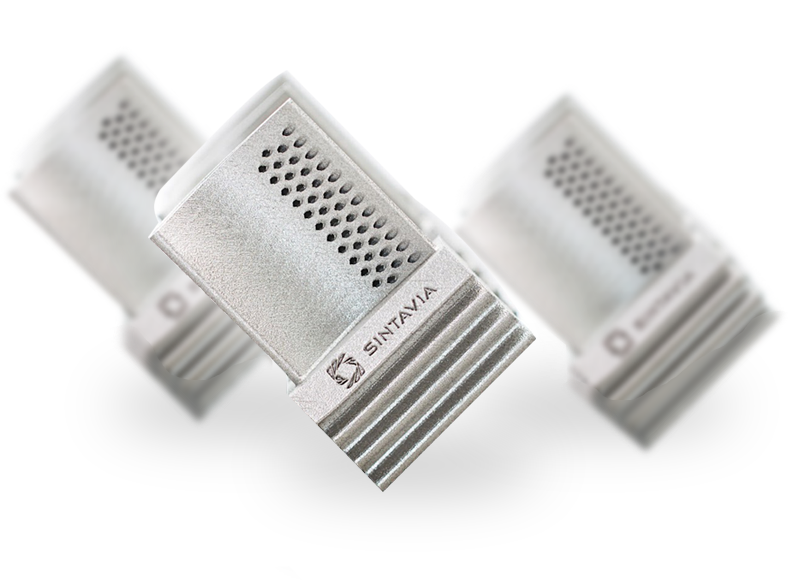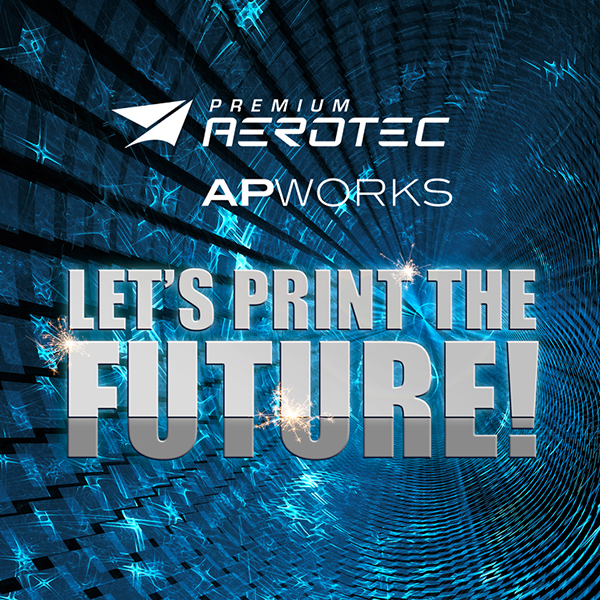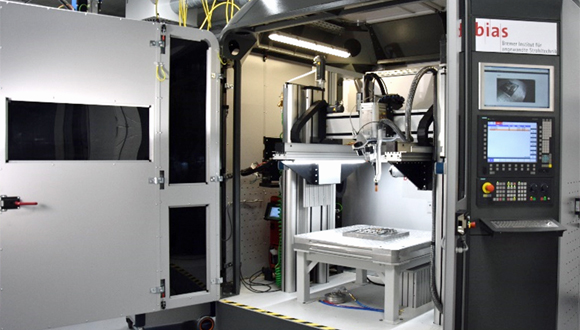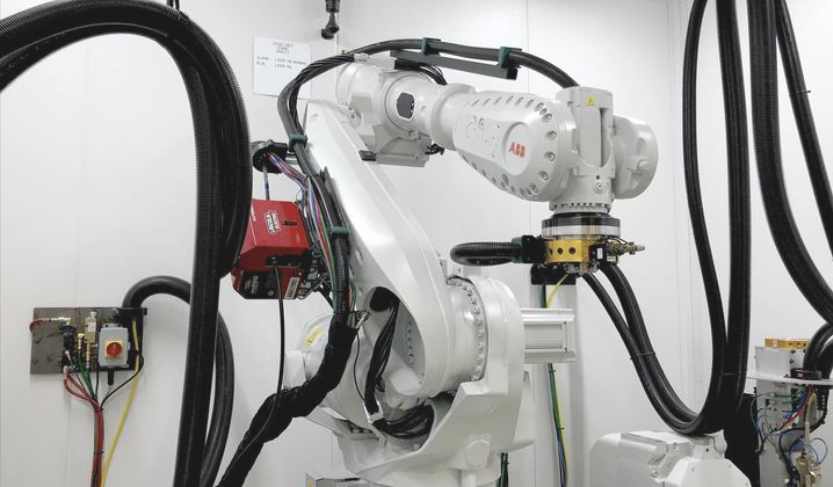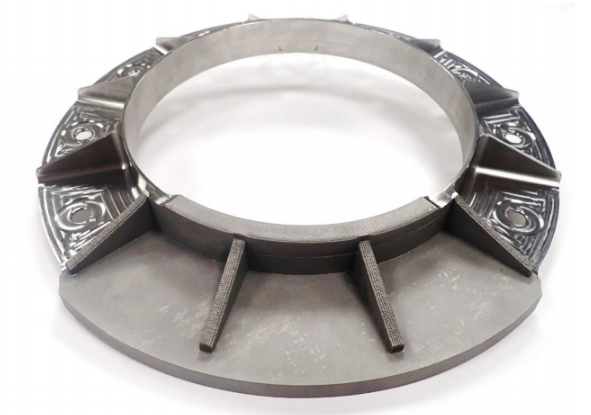[Image: Julie Reece, RIZE]
Typically, when I attend trade shows and events like RAPID + TCT and SOLIDWORKS World, I attend some presentations, maybe sit in on a panel discussion or two, and walk the show floor, conducting interviews and seeing what there is to see. I take closer looks at the systems we write about every day, get the chance to handle a part or two, and sometimes even try on 3D printed helmets. But I don’t normally have the opportunity to actually operate the hardware…until the recent RAPID 2019, when I met with Boston-based additive manufacturing company RIZE.
Let me back up – I was there for an interview with RIZE President and CEO Andy Kalambi to discuss the company’s patented Augmented Polymer Deposition (APD) technology, which allows for the easy snap-off release of supports. At formnext in November, the company introduced its industrial desktop XRIZE 3D printer, and I wanted to get a good look at the system that promises to print parts twice as fast as other leading AM technologies.
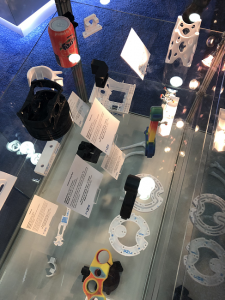 First, Kalambi told me that the company had just announced a partnership with Wichita State University’s National Institute of Aerospace Research (NIAR) at RAPID that’s focused on bringing 3D printing to end users.
First, Kalambi told me that the company had just announced a partnership with Wichita State University’s National Institute of Aerospace Research (NIAR) at RAPID that’s focused on bringing 3D printing to end users.
“We launched this whole concept called ‘smart spaces,’” Kalambi explained. “Makerspaces need to come to engineers, engineers don’t need to go to makerspaces.”
He told me that RIZE and its 3D printers are “purpose built” for safety, which is an area the company will not compromise on – this year, RIZE actually won the New Equipment Digest Innovation Award (the only 3D printing company to do so), and the Frost & Sullivan award for Best Practices in Technology Innovation, for its safe, zero-emission polymer 3D printing technology. In fact, Kalambi shared that a customer had told them at the AMUG conference that he uses their printers because he knows in 30 years he won’t get cancer – quite the endorsement.
“So we said, let’s purpose build our machine and our system for safety. Then we start extending that, and from safety we extend that to security – how do we ensure that a print is secure? That’s where the marking came in. And then we said, let’s start looking at applications and start solving those application problems. So that’s how we introduced carbon composite – this is another original material that has good strength.”
Engineering-grade RIZIUM CARBON is the company’s newest material, and features a higher modulus and excellent visual finish, making it perfect for functional prototyping.
Going back to the safe spaces concept, RIZE wanted to see what else they could add – more materials for more applications, and color as well.
“The 3D printing industry has condemned users to a monochrome world. So let’s bring color – every part can be in different colors, and not color for the sake of color, but color for the sake of communication, color for the sake of reducing errors, color for the sake of being more lifelike,” Kalambi said. “This is consumer validation…when you’re waiting at a traffic light and you see red, that’s communication.
“I don’t think this industry has bothered about color.”
 I mentioned there were only a few companies I could think of off the top of my head that were really doing color well, and he agreed, but stated that they were all really costly machines. Kalambi hopes that the next time we see RIZE machines displayed at a conference, all of the sample parts will be in color, and not just a few.
I mentioned there were only a few companies I could think of off the top of my head that were really doing color well, and he agreed, but stated that they were all really costly machines. Kalambi hopes that the next time we see RIZE machines displayed at a conference, all of the sample parts will be in color, and not just a few.
“There are many difference aspects to color, and that’s really exploded our use case scenarios.”
The company’s new color 3D printer will be heading to the market soon, shipping to early customers this month and generally available for purchase in August.
After mentioning that RIZE’s recent strategic partnership with Dassault Systèmes has brought the company a lot of continuity, we moved on to generative design and the company’s unique digitally augmented parts. He showed me how easy it was to add the company’s logo to the design file, as well as the bar code.
“Our uniqueness is our ability to mark,” Kalambi told me. “We’re the only ones doing it.”
Kalambi explained that RIZE covers the entire stream, all the way from digital marketing and quoting to manufacturing and delivery.
“You’re investing in the platform, not just the 3D printer,” he said. “We are focused on the user, not just the product.”
He said that RIZE wants users to feel comfortable using its machines and software, and that the company can train customers on its 3D printers in just 15 minutes. That’s when he got an idea – let me print something on the XRIZE at RAPID. Kalambi called over Vice President of Marketing Julie Reece to see if we’d have time to make it happen the next day, and once we figured out timing, he asked for my business card so it could be turned into a 3D model. Feeling pretty excited over what was to come, I left to conduct my next interview, with RIZE newly on my schedule for the next morning.
[Image: Julie Reece, RIZE]
When I arrived the next morning, Reece introduced me to RIZE Applications Engineer Neil Foley, who gave me a quick rundown on how the XRIZE 3D printer works. He opened the side panel so I could see the colored inks inside, and explained that the print of my business card would have a total of 29 layers; the first five layers would be a raft. The white filament is a little translucent so that the colors really shine through.
With just a few simple instructions from Foley, I was able to put in the magnetized build plate, close the door, and easily navigate the 3D printer’s touchscreen to select, and start, the print. The touchscreen not only tells you how long the print will take, but what layer it’s currently printing, with options to pause or cancel if necessary.
 I stayed at the booth to watch the five layers of the raft, and the first layer of the print itself, but then had to leave to take care of a few things before driving home from the show later that day. During the time I was gone, Reece contacted me to let me know that the print was complete, and that I could come back to the booth anytime to remove it from the plate.
I stayed at the booth to watch the five layers of the raft, and the first layer of the print itself, but then had to leave to take care of a few things before driving home from the show later that day. During the time I was gone, Reece contacted me to let me know that the print was complete, and that I could come back to the booth anytime to remove it from the plate.
Once I arrived, I took a few pictures of my completed print, then opened the door and pulled out the build plate, This was a little tougher than I imagined, possibly due to the magnets, but more likely because I tend to be nervous when handling expensive machinery and was afraid to pull too hard.
I was supposed to remove the supports myself, which I was really excited about, but because the print was pretty thin, they came off almost immediately when Foley removed the raft. But, Reece brought me over a small part that had just come off the Rize One so I could remove those supports, and it truly is as easy as it looks – hardly any pressure is required to snap them off. As for the XRIZE itself, it is definitely a user-friendly system, and for an industrial machine, that’s pretty great news.
All in all, I had a good talk with Kalambi at RAPID, and was thrilled to be given the chance to operate the XRIZE 3D printer and make a 3D printed version of my business card, which now sits on my desk at home. Take a look below to see more pictures that RIZE’s Julie Reece took of me operating the printer at RAPID:
Discuss this story and other 3D printing topics at 3DPrintBoard.com or share your thoughts in the Facebook comments below.
[Images: Sarah Saunders unless otherwise noted]




